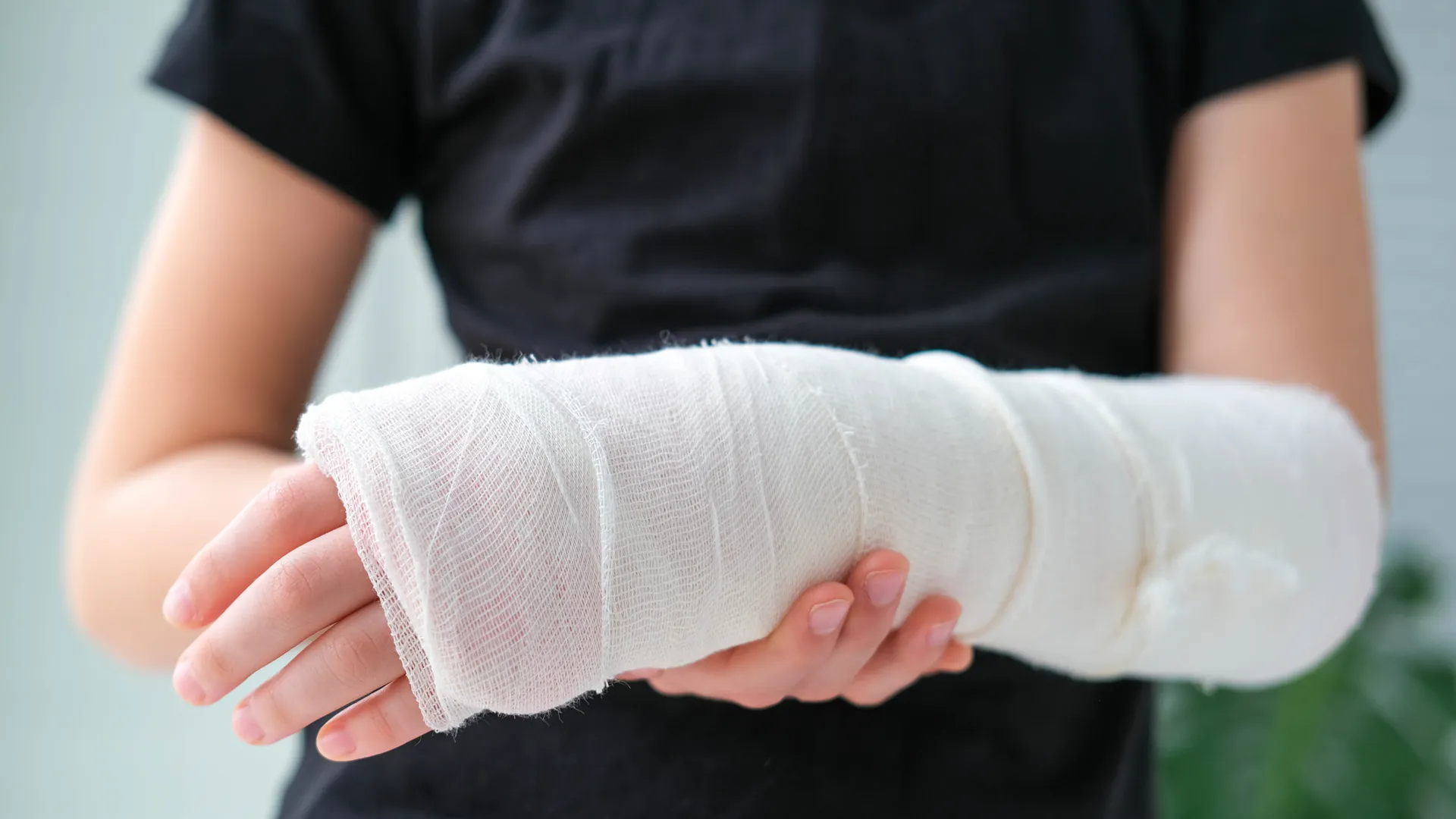Dry needling sounds like something horrifying, but don’t be tricked or put off by the…

Do You Have a Sprained Wrist?
A sprained wrist is a common injury which usually occurs after a fall onto an outstretched hand. Other impacts or accidents can cause a sprained wrist, but it usually involves the wrist being bent either forwards or backwards.
If you lose your balance and fall, your body’s first instinct is to break the fall—so you put your hands out immediately to keep yourself from hitting the ground. But if your body weight lands on your wrist, it can push it so far that the ligaments in the wrist are torn.
So let’s breakdown what exactly a sprained wrist is. A sprained wrist means that one of the ligaments inside the wrist has become damaged due to an injury. Ligaments are the connective tissues that connect bones to bones—think of ligaments as a “tape” that hold the bones together at a joint.
Sprained Wrist: Signs and Symptoms
Be on the lookout for the below common signs and symptoms if you think you may have a sprained wrist.
Check for Swelling. Inflammation and swelling is one of the most surefire signs of a sprained wrist. When you sprain your wrist, the ligaments are stretched and torn, so your body sends nutrient-rich blood to that area in an attempt to heal it. The excess blood leads to swelling around the injured area.
Look for Bruising. A sprained wrist causes damage to the blood vessels in the injured area, producing a bruise.
Look for Decreased Mobility. The ligaments in your wrist become torn after a sprain, leading to decreased mobility. You may have trouble grabbing and picking up things, or in moving your wrist from side to side, forward and back.
Look for Radiating Pain. After a sprained wrist, you will experience a radiating pain in your wrist due to damaged nerve endings in the soft tissues of your wrist. The wrist may feel tender to the touch.
Treatment Options for a Sprained Wrist
If you have a mild sprained wrist, follow the RICE rule and consider the below solutions.
- Rest the joint
- Ice the injured area to bring swelling down
- Compress the swelling with a bandage
- Elevate the injured area
Your doctor may recommend an anti-inflammatory drug such as ibuprofen, Advil, Motrin and others to relive pain and lower swelling.
Physical Therapy for a Sprained Wrist
Physical therapy for a sprained wrist involves a variety of stretching and strengthening exercises to restore range of motion and flexibility.
Quick Tips to Prevent a Sprained Wrist
- Wear wrist guards, gloves
- Stretching and strengthening exercises
- Prevent overuse injuries by taking frequent breaks to rest the hands and wrists
- Practice proper posture
Always consult with a medical professional before beginning any treatment programs.
Desert Hand Therapy provides excellence in upper extremity rehabilitation of all conditions of the hand, wrist, elbow and shoulder.



